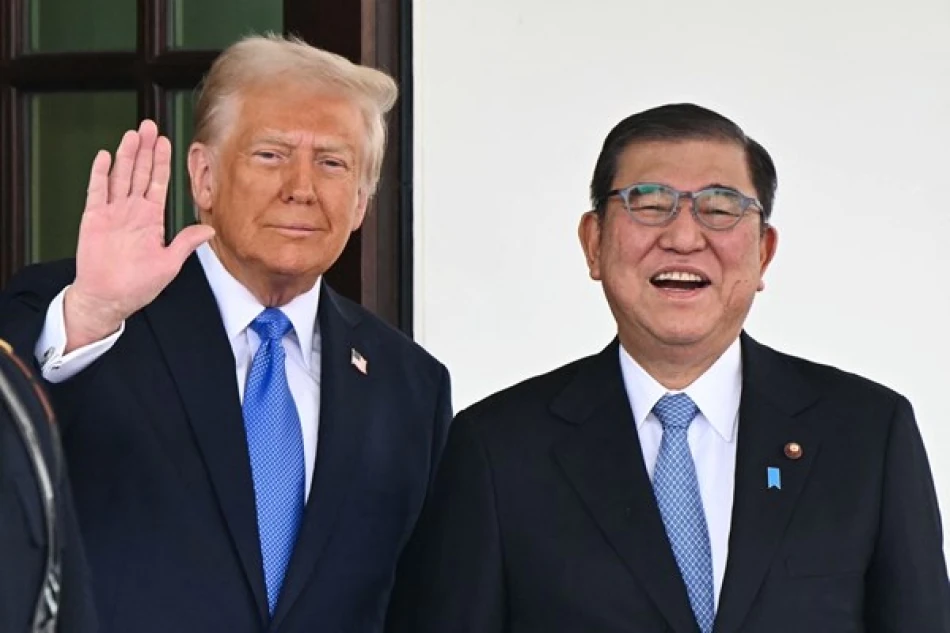
Unveiling the Customs Duty Deal: Exploring the U.S.-Japan Trade Agreement
Trump and Japan Strike Trade Deal That Cuts Auto Tariffs While Securing $550 Billion Investment Pledge
President Donald Trump and Japanese Prime Minister Shigeru Ishiba announced a comprehensive trade agreement Wednesday that reduces punitive tariffs on Japanese automotive imports from 25% to 15%, while securing Japan's commitment to invest up to $550 billion in the U.S. economy. The deal, reached just days before Trump's threatened August 1 deadline for blanket 25% tariffs on all Japanese goods, represents a significant diplomatic victory for both leaders amid mounting domestic political pressures.
The Economics Behind the Compromise
The agreement demonstrates classic trade negotiation dynamics where both sides claim victory while making strategic concessions. Japan avoided the catastrophic 25% across-the-board tariffs that economists estimated could have shaved a full percentage point off the country's GDP, while Trump secured substantial investment commitments and maintained leverage through selective tariff application.
Japanese automotive exports, which represent over a quarter of the country's total exports to the U.S., will face the reduced 15% tariff rate. However, steel and aluminum remain subject to separate 50% tariffs, indicating Trump's continued focus on protecting American heavy industry. Japan will maintain its existing agricultural tariffs but committed to importing more American rice within current quota limits.
Investment Strategy Targets Critical Industries
The $550 billion figure represents the maximum lending and guarantee capacity that Japanese banks and government agencies will deploy to boost institutional investment in America. This "Japan Invests in America" initiative specifically targets sectors Trump has identified as economically strategic: semiconductors, pharmaceuticals, steel, shipbuilding, critical minerals, energy, automotive, and artificial intelligence technologies.
This approach mirrors similar investment-for-market-access deals struck during Trump's previous term, particularly with South Korea and the European Union. Unlike those agreements, however, this deal comes with Japan facing significant domestic political instability that may affect implementation.
Political Timing Reveals Mutual Desperation
The agreement's timing exposes the political vulnerabilities driving both leaders. Ishiba's Liberal Democratic Party lost its majority in recent House of Councillors elections just three days before the announcement, triggering calls for his resignation from within his own party. Local media reports suggest Ishiba plans to step down by late August, making this potentially his final major diplomatic achievement.
For Trump, the deal provides early evidence of his "America First" trade strategy delivering tangible results, particularly important as he faces ongoing economic challenges and seeks to demonstrate effective leadership on trade issues that helped define his previous presidency.
Market Response Signals Cautious Optimism
Japanese equity markets responded enthusiastically, with the Nikkei index surging over 3% following the announcement. Automotive stocks led the rally, with Toyota jumping 15% and Honda gaining more than 11% as investors calculated the reduced tariff burden would preserve profit margins and market share in America.
However, the bond market told a more complex story. Ten-year Japanese government bond futures fell to their lowest level since March 28, suggesting investors expect the massive investment outflows to pressure domestic liquidity and potentially force the Bank of Japan to adjust monetary policy sooner than anticipated.
Strategic Implications for Global Trade
This agreement establishes a template for how Trump's administration will likely approach trade negotiations with other major partners. The combination of investment commitments, sectoral tariff reductions, and maintained pressure points creates a framework that preserves American leverage while providing trading partners with face-saving compromises.
The deal's focus on critical technology sectors also reflects growing U.S.-China competition, positioning Japan as a preferred alternative supplier for sensitive technologies. This alignment could accelerate the formation of distinct technological blocs, with Japan serving as a crucial bridge between American security concerns and Asian manufacturing capabilities.
The intensive negotiation process — involving eight visits by Japan's chief trade negotiator since April — demonstrates the complexity of modern trade relationships where traditional goods trade intersects with technology transfer, investment flows, and national security considerations. As other nations watch this template unfold, expect similar investment-heavy deals to become the new standard for avoiding Trump's tariff threats.
 Layla Al Mansoori
Layla Al Mansoori







